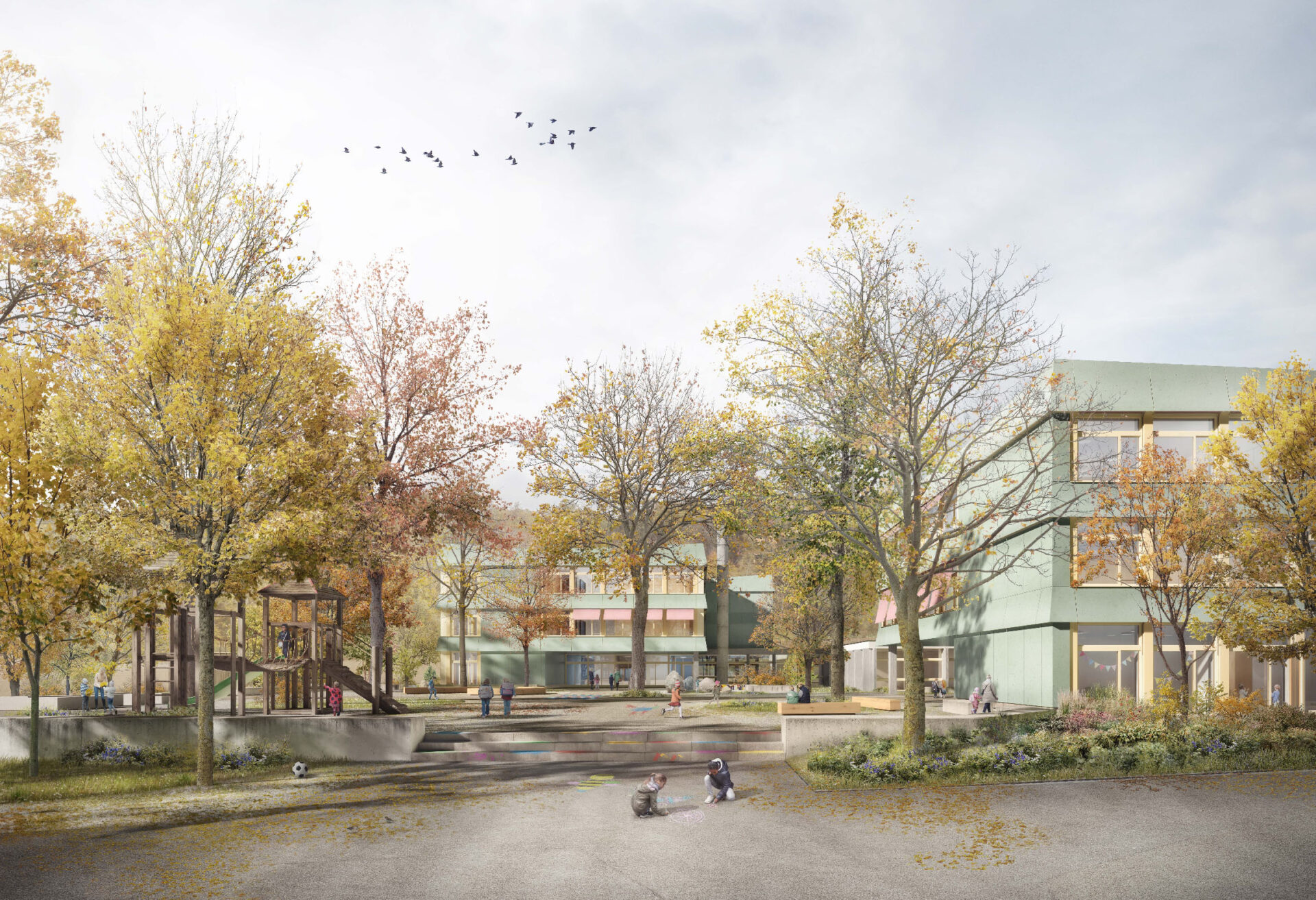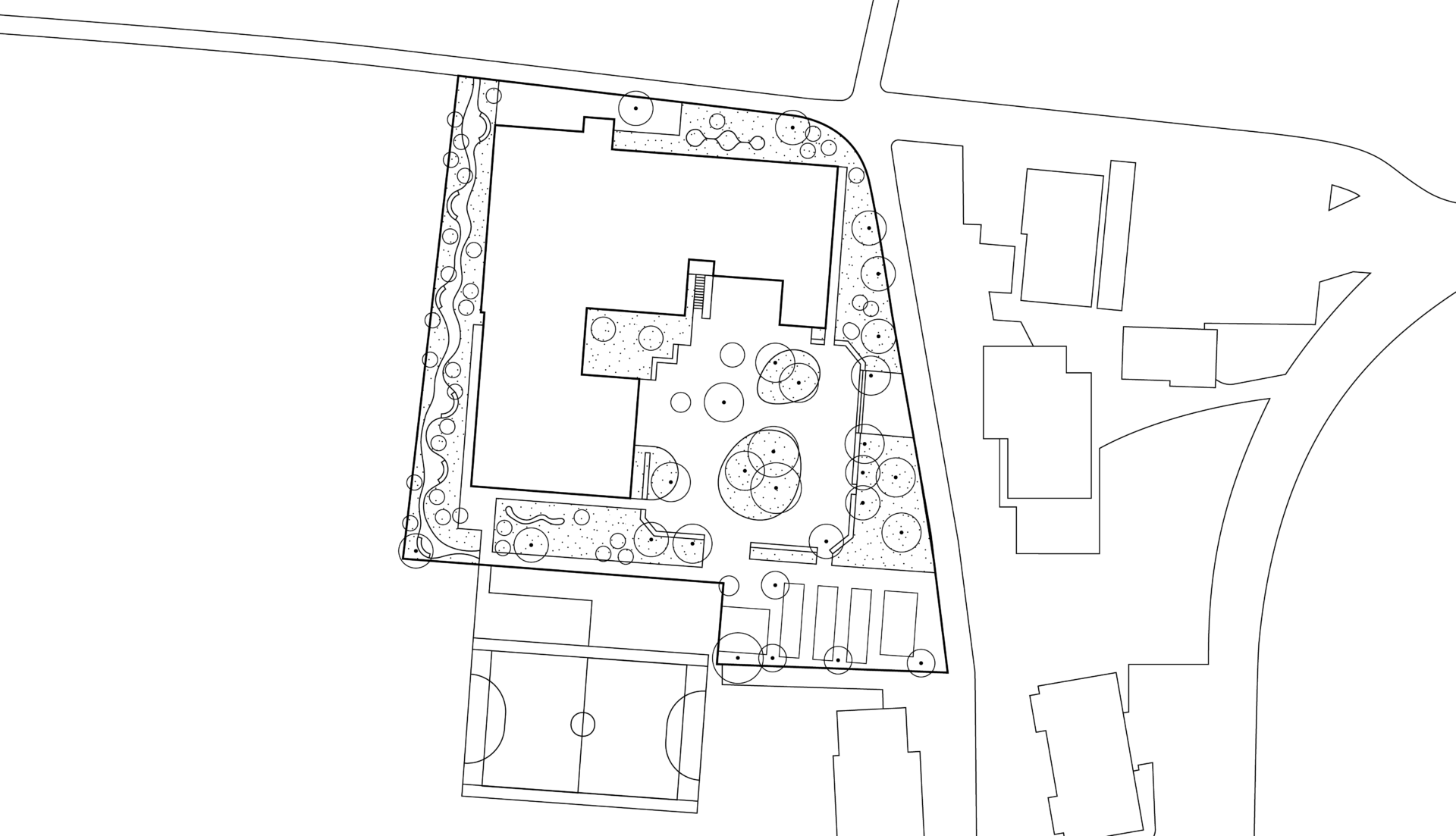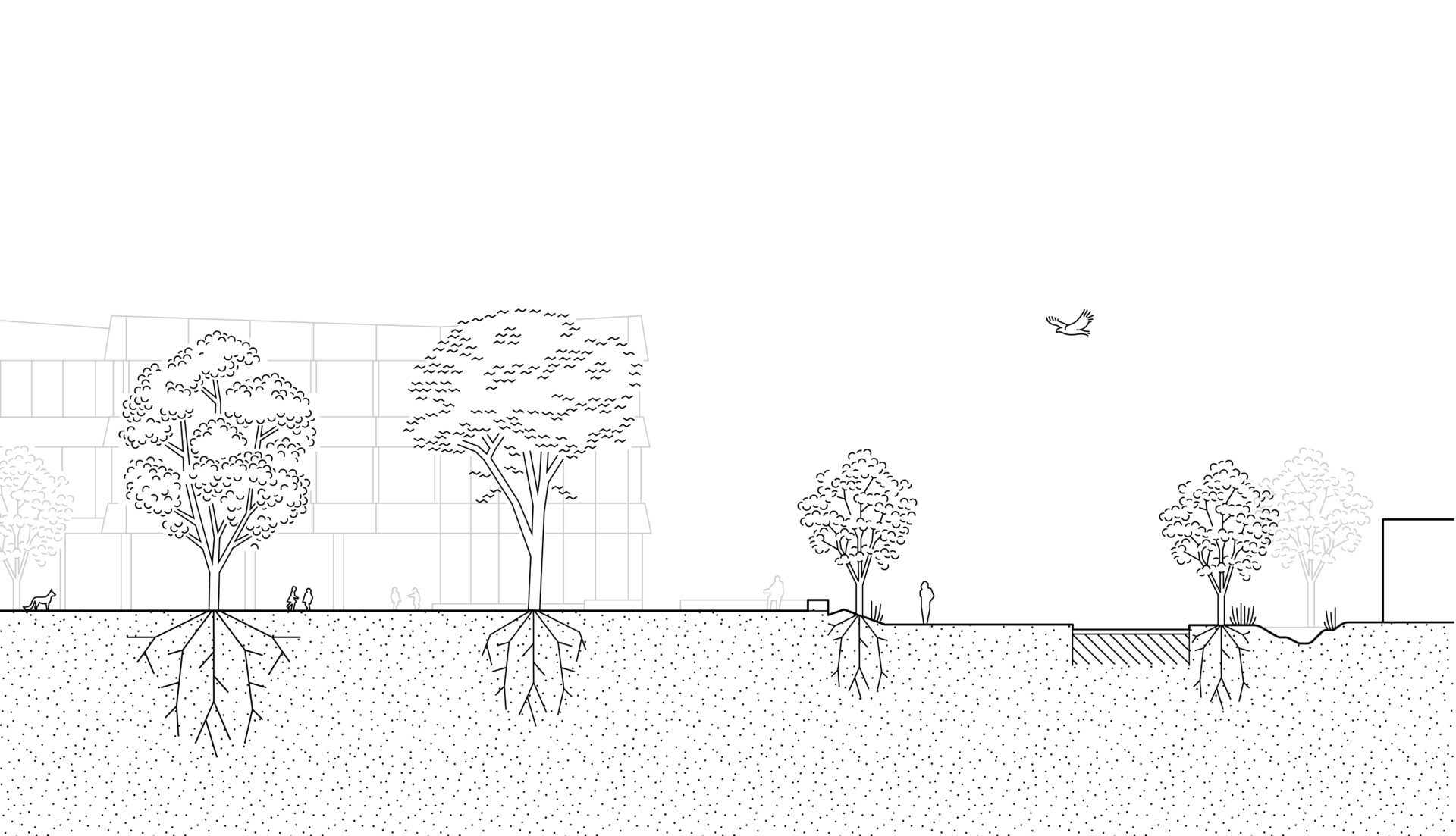Reinforcing existing qualities
Existing qualities such as trees and generous play areas are taken up and integrated into a pastoral and bucolic landscape in relation to the Glütschbach stream.
A varied range of play, gardening and mobility facilities is integrated into the existing landscaped area. Open spaces for pupils, offering numerous opportunities for the training of social, motor and cognitive skills, are the central idea and transform the playground into a park landscape.
Some areas are deliberately left open so that pupils can make them their own. Overall, the result is a space for movement with no threshold for opportunities for social development, which is the fundamental attitude of the landscaped space project.
Realisation
2026
Client
City of Thierachern
Procedure
SIA 142 1st prize
Collaborations
W2H Architekten AG
Anima Engineering AG
Grolimund + Partner AG
VINN GmbH
Services provided
SIA 31 - 53
Location
Thierachern (CH)
Surface
4'000sqm


